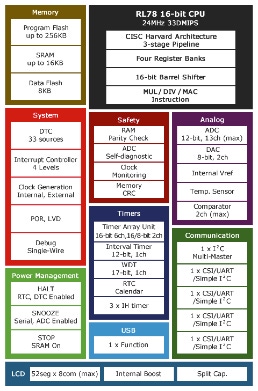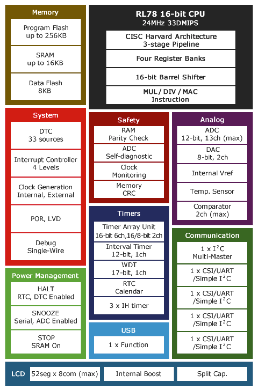The Heat Is On: Wireless Automation Technology Application for Smart Homes & Buildings
March 7, 2014

Home and building automation are not new concepts. Early automation implementations used wire harnesses and distributed bundles of cables to provide direct-switch and logic-based controls. These were mostly lighting, distributed audio and video systems, security systems, and environmental controls.
Electronic communications have drastically changed this architecture and made it more affordable and efficient to implement. Technology advancements are enabling emerging new applications, like connected thermostats, to come online quickly. Modern approaches place a microcontroller (MCU) at every node, allowing higher levels of functionality and better decision-making capabilities. For instance, graphic displays can be used instead of simple status LEDs to offer end users more information on energy and power usage patterns to allow them to reduce their utility expenses.
At the same time, wireless communications and services have seen an explosion of new applications and devices. The Internet of Things (IoT) is changing the way we interact with everything, including our homes and buildings. Radio transceiver chips play a big role in interconnecting various discrete functions that traditionally did not communicate with each other.

One example where advancements in embedded microcontroller and wireless design are being leveraged to provide power efficiency and secure connectivity for smart homes is an automated thermostat application with local and global access capabilities. While any MCU can perform basic functions, an optimized MCU with the right mix of peripherals, performance levels, and power features can make automated devices more appealing to design with and provide a richer user experience.
Power is key
The benefits of a programmable and remotely accessible thermostat offer a compelling option for existing homes, apartments, and buildings. Designing for this market requires two important considerations: The thermostat must be usable in a legacy fashion, and it must be able to be retrofitted into the existing buildings.
Current thermostats for building temperature control typically have power available to them, but in a limiting way. Typically, a two-wire AC waveform of either 120V AC or 24V AC is used to feed the thermostat.
In a legacy electromechanical system, a bimetallic strip deforms when a temperature threshold is reached. This closes a set of electrical contacts, shorting out the AC waveform. Typically, this engages a relay or driver circuit that would turn on the heating (or cooling) system.
With the contacts shorted, no power can be siphoned off the AC line to keep the MCU and radio alive, frequently for long periods, while the heating system is on. Bottom line: A battery, a super-capacitor, or a reliable energy-harvesting technology must be used to keep the circuitry alive during these blackout periods. Most modern thermostats for automated environments use a battery.
To reduce energy, our MCU needs to feature low-voltage operations suitable for direct battery operations. Important are very low-power sleep modes with register retention to store parameters and settings. A low-power real-time clock and overall low-power operations are also desirable. MCUs designed for low power, like Renesas's RL78 MCU, offer an ideal choice.
Low-power cores that run down to 1.6V and a built-in low-voltage detector can act while the battery still has enough energy to send a "replace battery" message. Integrating a low-power real-time counter that uses an internal oscillator or an external 32.768-kHz crystal allows the thermostat to keep track of time and automatically switch profiles based on user programmed schedules. This part draws only 0.31 uA while in RAM retained stop mode with the low-voltage detector functioning.
About the Author(s)
You May Also Like





